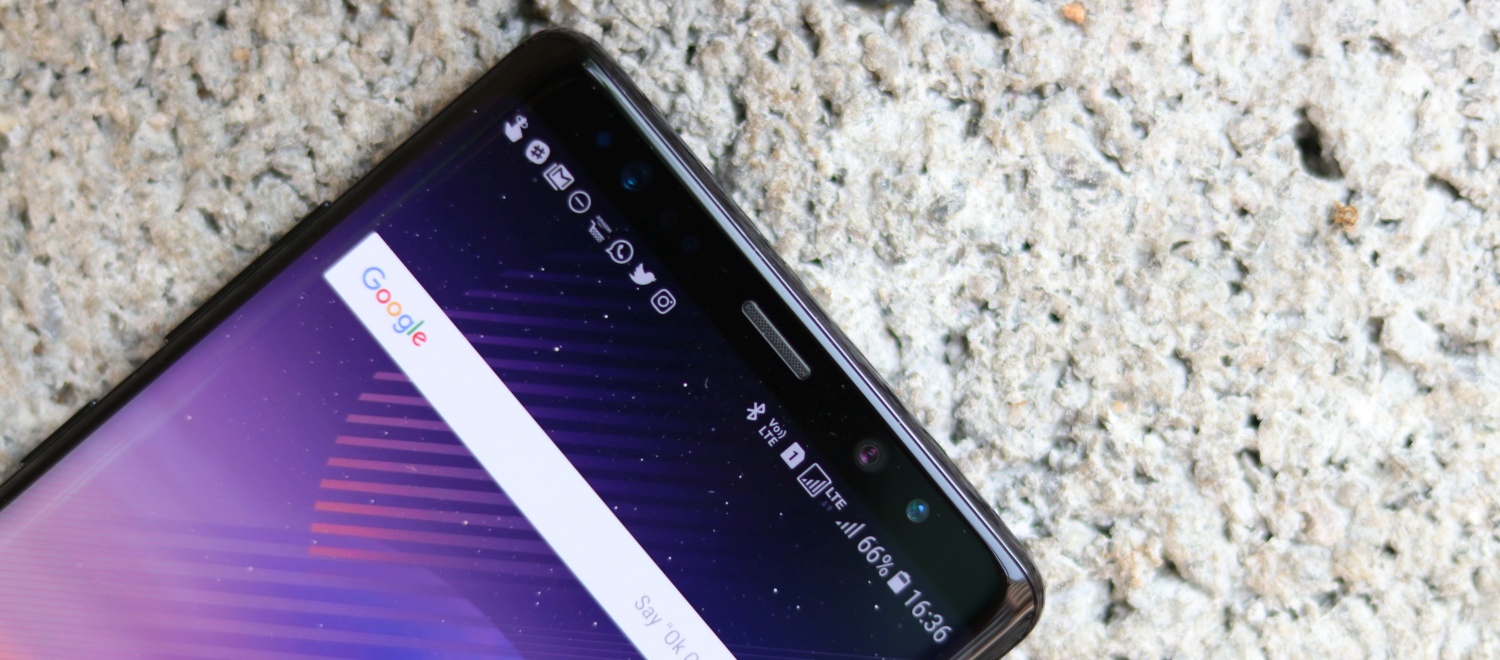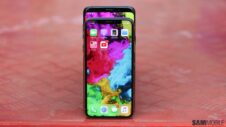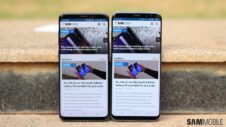Samsung has worked diligently over the past few years to shed its reputation of being an Apple copycat and started blazing its own trail in smartphone design. It was far ahead of Apple in adopting edge-to-edge displays for smartphones and one can easily credit the company with popularizing the trend for the entire industry.
Apple has had a profound impact on smartphone design as well and even though at least one Android manufacturer embraced the display notch well before the iPhone X, Apple's flagship smartphone has really popularized the idea so much so that scores of Android manufacturers are moving in that direction now. It's imperative that Samsung not jump on that bandwagon.
We first need to understand why the notch exists anyway. Samsung's Galaxy Note lineup kickstarted the trend of smartphones with substantial displays and while initial models of such handsets were difficult to use one-handed, smartphone manufacturers have been able to fit larger displays in smaller bodies by slimming down the bezels and adopting “taller” displays.
While bezels around the displays were the first to go, symmetrical bezels were kept at the top and bottom to house the front-facing camera, sensors and fingerprint readers. Subsequent iterations took it one step further by relocating the fingerprint reader to the back and slimming down the bottom bezel even more.
It's at this point that smartphone designers arrived at a dilemma. How do you maximize the screen-to-body ratio without having to make the device bigger? They would have to find a way to house the camera and sensors somewhere while claiming additional screen real estate and so the notch was born.
Essential, Android co-founder Andy Rubin's company, introduced the notch to Android smartphones with its first flagship device called the Essential Phone (released well before the iPhone X last year). It had a cutout or notch for the front-facing camera which segmented the status bar at the top while allowing the display to be stretched up to the maximum.
Then came the iPhone X. Apple didn't try to hide the notch, rather it embraced it in all marketing materials for the new flagship. It was significantly larger than the one on the Essential Phone because not only did it house the front camera it also housed the advanced sensors for Apple's Face ID facial recognition feature.
The Essential Phone didn't really inspire, for lack of a better word, other Android smartphone manufacturers to embrace the notch but the iPhone X did. Several Chinese OEMs introduced new handsets at the Mobile World Congress 2018 last month with notches that appear to have been lifted straight from the iPhone X.
It's not just the obscure manufacturers like Noa and Ulefone who did this, even well regarded manufacturers like Asus have jumped on the bandwagon. The company's new Zenfone 5 looks like a shameless iPhone X clone and Asus even talked up the notch during its event claiming that it was 26 percent smaller “than Fruit Phone X.” This is just the beginning as Huawei's upcoming P20 lineup is reported to embrace the notch as well as the upcoming flagship smartphones from LG and OnePlus.
Google has acknowledged that its OEM partners are going in this direction and it has made a subtle yet substantial addition to Android which is going to open the floodgates to notch-touting Android smartphones. Most manufacturers weren't able to have their software properly work around the notch as the core Android OS wasn't designed for that segment screen but all that changes with Android P, the next major Android platform upgrade.
The first official Android P developer preview was released earlier this week and Google confirmed that it has “display cutout support.” This means that Android OS will be fully capable of supporting smartphones with notches and developers will now be able to test how their full-screen apps will work on those devices.
It's no secret that many Android smartphone manufacturers look to Apple for design inspiration and tend to copy its moves. This is particularly true for those based in China. It's not surprising to see that Google is embracing the notch as well, it must support its OEM partners and if they're adopting this trend then Google can only nudge them along. Most of them aren't really worried about being branded as Apple copycats and haven't really worked to shed that reputation.
This is why I feel that it's imperative for Samsung to not follow this trend. Samsung's smartphone design has come a long way and there's no denying that the company is in a league of its own. The Galaxy S8 was widely regarded as having one of the best smartphone designs last year and with good reason.
Samsung has evolved into a trendsetter for the entire industry and the company should not put that reputation on the line just to follow the pack. It really doesn't stand to gain anything by this but would instead reinforce the notion that it exhibits knee-jerk reactions to whatever Apple does. That's a charge that it has had to refute because of the Animoji-like AR Emoji feature on the Galaxy S9 as well.
Smartphone manufacturers who are embracing the notch present it as some sort of innovation but the truth is that it was born out of necessity. There have already been reports that Apple wanted to house all of the components in the iPhone X's notch underneath the display glass but wasn't able to because the technology wasn't ready. Some reports even suggested that it tried for months to integrate a fingerprint sensor under the display but technical difficulties prevented it from doing so which is why it came up with Face ID instead.
It really doesn't seem like the notch is here to stay for long. Word on the street is that Apple will eventually ditch the notch when the technology that enables it to house those components under the display glass is ready. Some rumors suggest that it might do that as soon as next year. When Apple does that, what do you think the OEMs that followed it on the notch bandwagon will do next?
Does Samsung really want to risk its reputation by shifting to a notch a year after Apple does and then doing away with the notch after Apple does it first? If Samsung does that, it runs the risk of alienating its diehard fans who have come to the company's defense in online forums and blogs when it's accused of copying Apple. The fans have stuck by Samsung and have relished its evolution into an industry trendsetter. They wouldn't want to see the company take one step forward only to take two backward. It might be the straw that breaks the camel's back, so to speak, and they might decide to give up on Samsung smartphones entirely.
It really isn't worth it, in my opinion. Samsung should instead be focused on achieving that goal before Apple and get a leg up on its main rival by putting out a device that doesn't need a notch in the first place.
DJ Koh, the CEO of Samsung's mobile division, recently said that the company is no longer obsessed with being the first in the world to bring new smartphone technologies to the market. It will take its time to perfect in-display fingerprint sensors and foldable smartphones before it launches them. So, hopefully, it will take its time in perfecting technologies that eliminate the need for a notch and bring them to market instead of relegating itself to a band of copycats.
Do you agree that Samsung has nothing to gain but a lot to lose by embracing the notch? Share your thoughts with us in the comments below.







